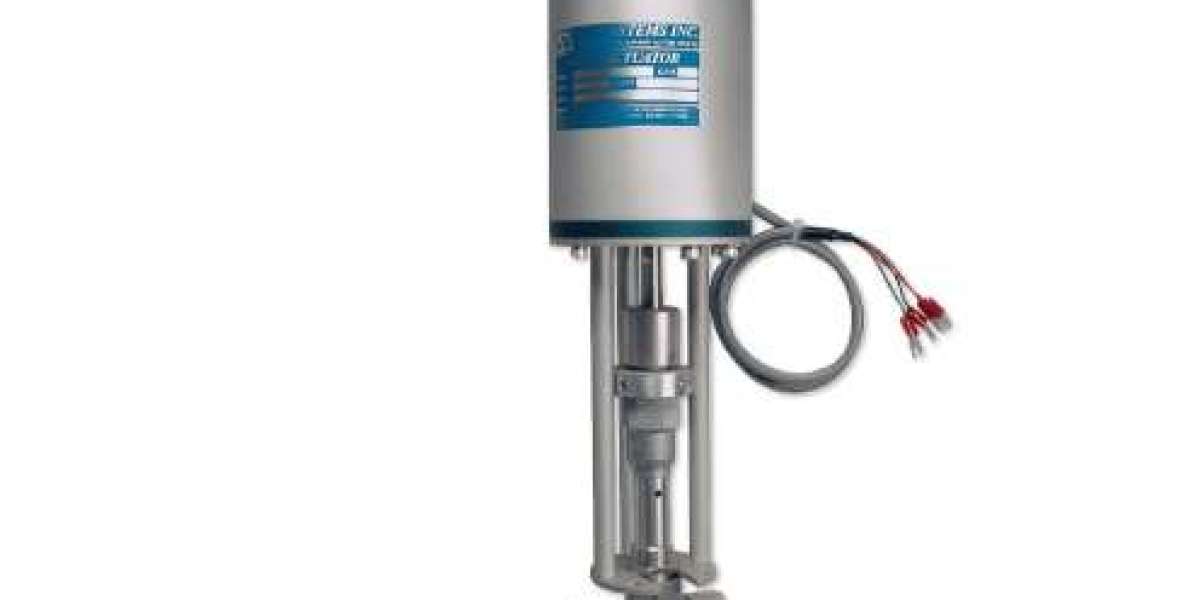Small discrepancies between command signals and valve positions can cause significant issues in a plant, resulting in wasted energy, rework, and unexpected downtime. When a valve actuator delivers precise and consistent motion, control loops stabilize quickly and remain on target, thus protecting product quality and production schedules. This article explores the origins of these benefits and provides guidance on how to select valve actuator hardware to ensure these advantages are effectively implemented on the production floor.
ETI Systems is known for control components that perform in real operating conditions. The company’s engineering focuses on stable motion, honest feedback, and long service life. In the sections ahead, you will see how integrating ETI Systems actuators lifts production performance with examples, and how to choose a model that fits both the valve and the site.
What a Valve Actuator Delivers in Process Control
Reliable control begins with motion that lands where the controller commands and stays there. The right valve actuator converts signals into clean movement that holds position under load, which keeps trends smooth and alarms quiet.
1. Precise Motion and Stable Loops
Fine command steps and low hysteresis prevent overshoot and hunting. When position matches intent, temperature, pressure, and flow stay inside narrow bands. That steadiness shortens time to setpoint and supports predictable cycle times.
2. Safer Operations and Consistent Changeovers
Defined limits and clear feedback reduce the guesswork that slows startups and maintenance. Operators can confirm travel and seating during checks, which improves confidence after changeovers. Consistency in behavior lowers the chance of missteps.
3. Lower Maintenance and Lifecycle Cost
Sound sealing, sensible duty ratings, and accessible adjustments reduce routine work. Fewer breakdowns and faster calibration protect uptime. Over time, parts and labor trend down because settings hold and components last.
Examples: Production Improvements With ETI Systems Valve Actuators
Each site has its own constraints, yet the path to better control looks similar. These examples show how ETI Systems integration turns careful selection into measurable results.
Water Filtration: Steady Flow Through Media Beds
In gravity and pressure filters, small fluctuations around the setpoint can disturb the media bed and cause the differential pressure to deviate from the target. A properly sized electric valve actuator with verified feedback can make precise adjustments and maintain seating force, ensuring that flow changes remain steady even when demand varies.
As a result, plants experience fewer pump starts and more stable differential pressure trends. Backwash timing becomes more predictable, and recovery after media servicing is quicker due to consistent calibration. Operators can confirm limits and zero settings in just a few minutes, allowing them to return the skid to production without having to address frequent alarms.
Beverage Blending: Tight Targets During Recipe Changes
Changeovers depend on a series of small, repeatable steps. A proportional actuator, combined with encoder feedback, translates minor command adjustments into corresponding motion, ensuring that syrup and water remain in the correct ratio during ramps and trims.
As a result, batches consistently fall within target ranges with minimal tuning required from one shift to the next. Clean-in-place (CIP) processes start and finish smoothly because the valve returns to known positions. Additionally, position traces facilitate audits without causing delays in the production line.
Chemical Dosing: Predictable Micro Moves
Dosing skids operate with short, repetitive movements throughout the day. An electric actuator that provides stable feedback and has sufficient thermal headroom prevents drift during frequent adjustments. This allows the controller to maintain pH or conductivity levels even as the load fluctuates.
As the system reduces overshoot and minimizes corrections, chemical usage decreases. Maintenance can be scheduled at planned intervals because monitoring position and effort trends helps identify wear early. This enables parts to be replaced before accuracy is compromised.
Valve Actuator Benefits: Energy Efficiency, Quality, and Uptime
Accurate Valve Actuator positioning lowers energy use by preventing overrun and needless pump cycling. With valves seated properly, scrap drops and production stay on schedule.
Position Accuracy and Energy Use
A smaller position error reduces heating, cooling, and pumping work. Steady loops avoid the extra effort that comes from chasing setpoints. The effect is visible in calmer trends and lower utility reports.
Shutoff Integrity and Idle Losses
Proper seating limits leakage during holds. With tight shutoff, levels and pressure remain steady, and makeup energy drops. Quality records reflect fewer drifts between runs.
Diagnostics and Planned Service
Clear feedback and simple tests surface issues early. Teams can confirm direction, limits, and scale on the bench, then save a baseline for later. Planned checks cut troubleshooting time and protect uptime.
Integration Guide: Specifying a Valve Actuator
A good specification ties the valve, the process, and the site together. Use the steps below to move from a requirement to a part number that works.
Define Motion and Load
Map the valve’s work across the entire stroke. Capture breakaway, running, and seating torque or thrust, then set travel and timing that match the control loop. Add margin for viscosity shifts, pressure swings, and cold starts so the valve actuator moves cleanly.
- Calculate breakaway, running, and seating values
- Confirm total travel and open or close time targets
- Include process pressure and media temperature effects
- Check inertia, packing friction, and first shift cold conditions
Align Feedback and Control Signals
Choose a control mode and feedback that your controller and maintenance plan can support. Keep scaling, filtering, and update rates consistent so commands and readings line up during fast moves and fine trims.
- Select on or off or proportional control to fit the loop
- Pick a potentiometer, Hall, or encoder feedback, and set the scale
- Verify update rate, filtering, and input range at the PLC
- Define fault actions for loss of signal or mismatch
Fit Environment and Duty
Match protection and materials to the site, then size duty to real motion. Proper sealing, temperature range, and thermal headroom keep accuracy steady during long runs and hot days.
- Set IP level for washdown, dust, or outdoor exposure
- Confirm operating and storage temperatures with a margin
- Review vibration, mounting orientation, and cable strain relief
- Match the duty rating and thermal path to the cycle profile
Plan Commissioning and Service
Prove behavior on the bench before installation and save a baseline. Add short functional checks to rounds and keep spares on hand so small issues never interrupt production.
- Verify direction, limits, torque settings, and feedback scale
- Record baseline plots and store the settings with the asset
- Schedule quick travel and signal checks by interval or hours
- Stock common spares and note tools required for changeover
Why ETI Systems for Valve Actuators
ETI Systems designs and builds precision control components for industrial automation. The company’s portfolio spans industrial joysticks, rotary and linear potentiometers, and electric actuators for fluid control. Engineering teams validate materials, sealing, temperature range, and thermal paths so motion stays smooth and feedback stays true in real operating conditions. The result is equipment that holds calibration between services and gives controllers a signal they can trust.
When a project requires a dependable Valve Actuator, ETI Systems maps the valve’s torque curve, seating force, travel, duty cycle, and site conditions to a matched solution. Customers can select rotary or linear formats with on or off or proportional control, plus feedback options that fit their calibration routine. Clear drawings, baseline setup guidance, and responsive application support shorten commissioning and help plants reach steady production faster. Purchasing is straightforward through authorized channels with full traceability.
Frequently Asked Questions
How does a Valve Actuator improve process control?
It converts control signals into repeatable motion, helping the valve reach a position smoothly and hold it under load. Steady positioning keeps flow, pressure, and temperature inside target bands.
Which Valve Actuator specifications matter most for accuracy and uptime?
Size torque or thrust with margin, define travel and time, select feedback with adequate resolution, and match duty and temperature ratings to the site. These basics protect accuracy over the years of service.
When should I use proportional control on a Valve Actuator instead of on/off?
Use proportional control when the loop needs fine steps and a steady setpoint. Typical triggers include flow targets within about two percent, pH within about 0.1, or temperature within about 0.5 °C.
What protects a Valve Actuator’s performance in harsh environments?
Select ingress protection that matches exposure, choose corrosion-resistant materials, and verify the temperature range and vibration tolerance. Good grounding and cable routing protect signal integrity.
What should be verified at Valve Actuator commissioning?
Check direction, travel limits, and feedback scaling on the bench, then save a baseline. Confirm fault behavior and add quick functional checks to maintenance rounds.
Ready to align a valve actuator with your process? Share valve details, signals, and site conditions. ETI Systems can help select a model that holds position, reduces downtime, and improves overall efficiency.



